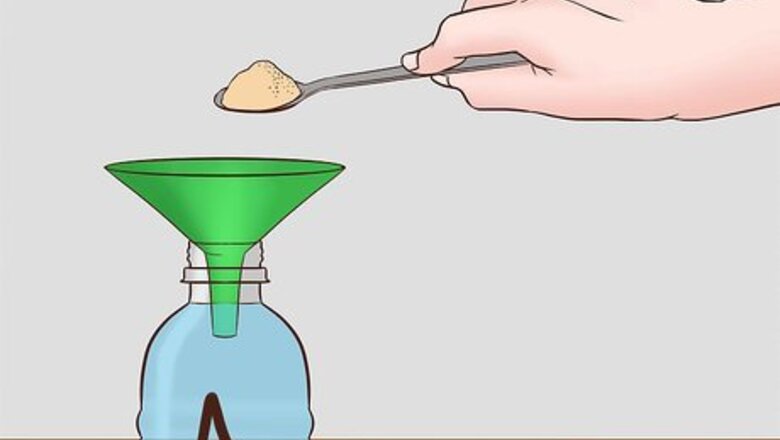
views
- Make your CO2 mixture by combining 200 g of baking soda and 200 ml of water in one bottle and 200 g of citric acid and 600 ml of water into another.
- With a CO2 generator kit, screw the pressure gauge cap on the citric acid bottle, screw the valve cap onto the baking soda bottle, and connect the end of the tubing to a bubble counter.
- Then, connect the bubble counter to additional tubing and finally, connect a diffuser to the end of the tubing.
- Put your diffuser in your tank, adjust the valve to change the CO2 level, and change out your mixture every 20 days.
Creating the CO2 Mixture
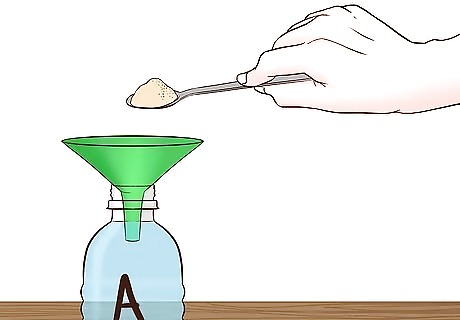
Pour 200 g (13.89 tbsp) of baking soda into a 2 l (68 fl oz) bottle. Empty out a 2 l (68 fl oz) bottle of juice or soda and rinse it out with cold water. Position a funnel in the mouth of the bottle and pour 200 g (13.89 tbsp) of baking soda into it. Use a marker to write an A on the bottle so you can keep track of which bottle it is. You can buy baking soda at a grocery store or online.
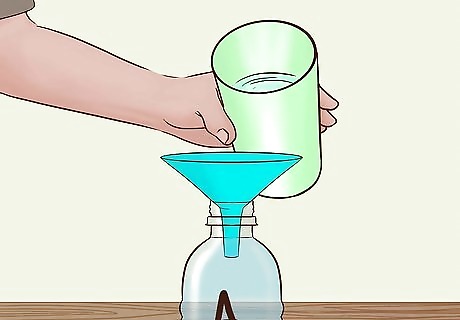
Add 200 ml (6.8 fl oz) of water to the baking soda bottle. Use the funnel to pour the water into the bottle so that it doesn’t spill. The water will look cloudy and white once you’ve poured it in. If you need to generate more CO2, you can use more baking soda and water in this bottle. Just make sure to keep the mixture to a 1:1 ratio.
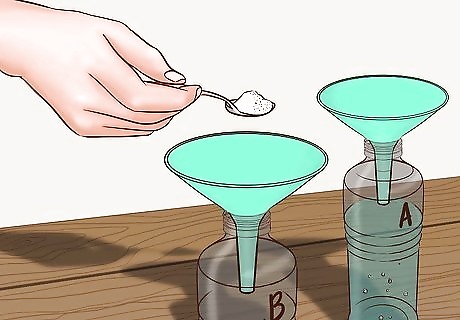
Add 200 g (13.89 tbsp) of citric acid into a second 2 l (68 fl oz) bottle. You can purchase citric acid online or at some grocery stores. Wipe out the inside of the funnel so that it’s dry and position it over a separate bottle. Then, slowly pour the citric acid into the top of the funnel. Write a B on this bottle with a marker. Citric acid will come in a powder form. Citric acid is an ingredient that’s commonly used in pickling and is a component of certain candy.
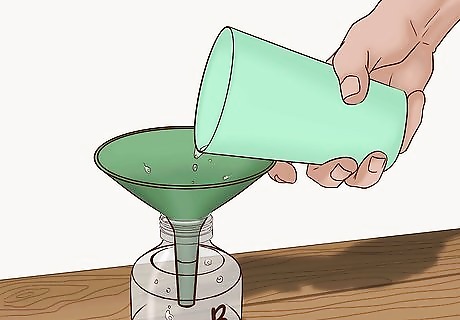
Pour 600 ml (20 fl oz) of water into the citric acid bottle. Measure out the water with a measuring cup and pour it into the bottle, using the funnel. The solution will look clear at the bottom of the bottle. If you are trying to generate more CO2 and you’ve increased the amount of baking soda you’re using, make sure to adjust the amount of citric acid that you’re using accordingly. Always keep the citric acid to water ratio at 1:3.
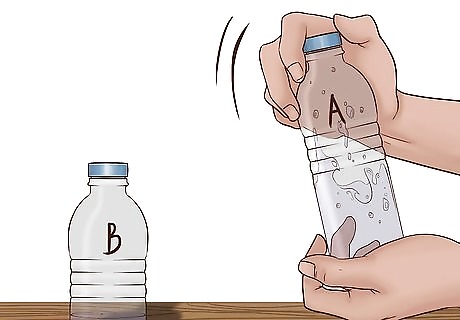
Shake both bottles to mix the solutions. Screw the caps on both bottles and shake them vigorously to mix the solutions and start the CO2 reaction. You should start to see the mixtures bubble in the bottles. Once they are mixed, remove the caps.
Connecting Your System
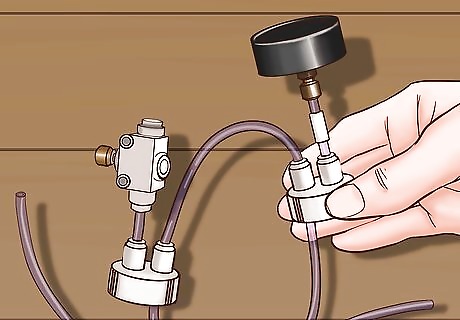
Purchase a CO2 generator kit at an aquarium or online. A CO2 generator kit will have plastic tubing connecting 2 caps and should include a pressure gauge and a valve. Sometimes, the tubing will be connected by a piece of hard plastic. The pressure gauge and valve will allow you to monitor and regulate how much CO2 is going into your tank. These kits will typically cost anywhere from $10-$25. Read the instructions that come with your specific kit. If you don’t get a CO2 generator kit, you won’t be able to accurately regulate the CO2 going into your tank, which could be dangerous for pets and vegetation.
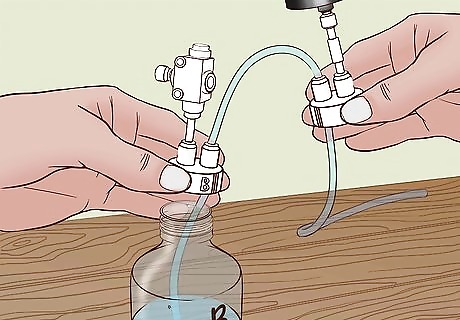
Screw the pressure gauge cap to the top of your citric acid bottle. Insert the tubing that’s coming out of the cap into the bottle labeled with a B. Then, turn the cap clockwise until it’s tight.
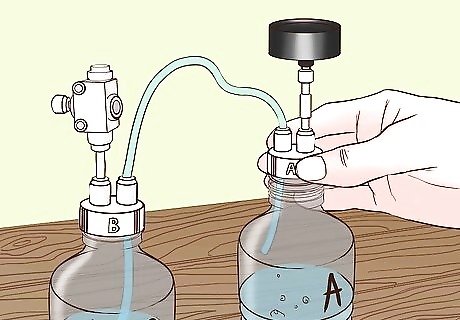
Screw the cap with the valve attached onto the baking soda bottle. Turn the valve clockwise to close it before hooking up the bottles. Then, place the tube coming out the cap with the valve attached to the top into the baking soda bottle. Turn the cap clockwise to tighten it. Connecting the bottles together allows the citric acid to slowly flow into the baking soda bottle which will produce the chemical reaction that will generate CO2.
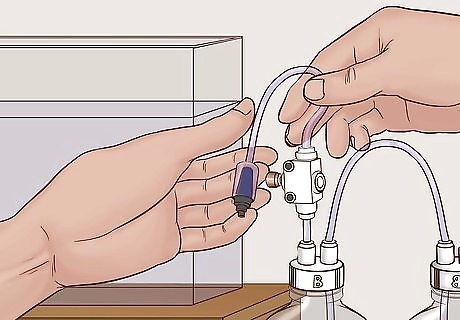
Connect the end of the tubing to a bubble counter. A bubble counter is a small plastic piece that the CO2 diffuses through before going into your tank. Fill the bubble counter with water. Then, take the plastic tubing coming from your valve and insert the end into the bubble counter. A bubble counter will help you monitor how much CO2 is actually being generated by your system which will allow you to moderate how much CO2 you are using.

Connect the bubble counter to additional tubing. Get tubing that’s long enough so that it can reach the bottom of your tank. Take the tubing and connect it to the output valve on the bottom your bubble counter.
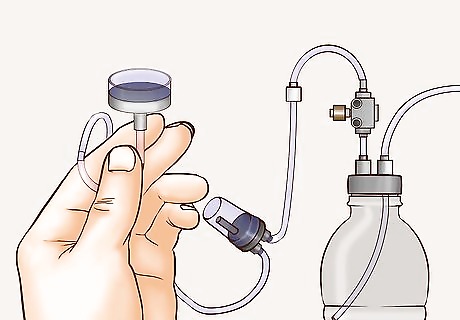
Connect a diffuser to the end of the tubing. Purchase a diffuser at a pet store or online. Connect the end of the tubing to the diffuser. Your CO2 setup is complete. A diffuser will help break up larger bubbles and diffuse the CO2 into the water.
Using and Maintaining the System
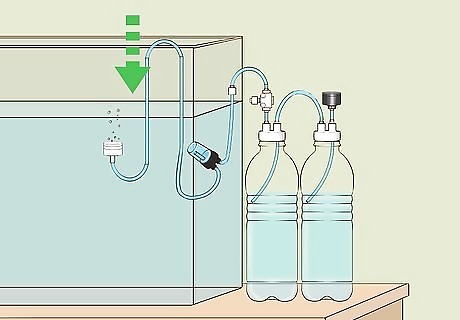
Place the diffuser into the bottom of the tank. Bubbles should form in the bubble counter every couple of seconds. This is a sign that your system is working correctly. As the CO2 moves its way through the tubes you should see bubbles coming out of your diffuser. It may take 1-2 minutes for the CO2 bubbles reach your diffuser.
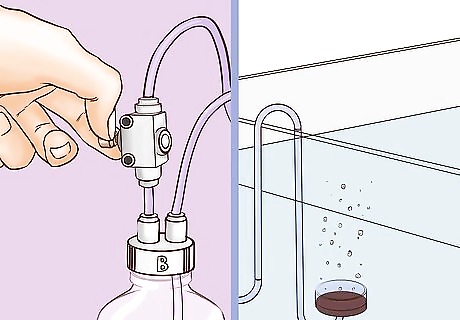
Adjust the valve to increase or decrease the CO2 in the tank. Turn the valve clockwise to close the valve and reduce the amount of CO2 being generated. Turn it counterclockwise to open the valve to increase the amount of CO2. As a rule of thumb for most tank setups, this would equate to 10 bubbles per minute per 100 l (3,400 fl oz) of water. The amount of CO2 that your tank needs depends on the size of your tank and the type and amount of vegetation in it. You can test the CO2 levels in your water with a drop checker, or a glass device that will change Color depending on the level of CO2 in your water.
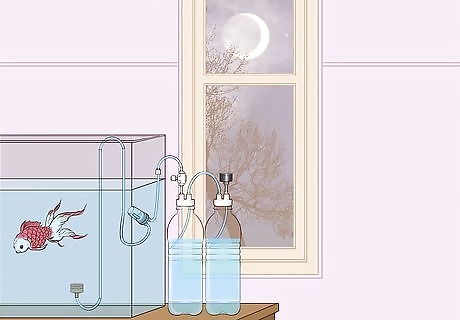
Turn off your system at night or use an air pump. Your aquarium’s plantlife does not need CO2 at night, and leaving your system on may result in CO2 poisoning for your fish. Turn the valve clockwise and close it completely at night. You can also purchase an air pump and place it on a timer so that it runs at night, which will counteract the excess CO2 in the tank.

Change the CO2 mix once every 20 days. Remove the diffuser from the water and open the needle valve until the pressure on the gauge reads 0. Then, remove the caps from both bottles and rinse them out before mixing a new CO2 mixture. Reattach the bottles and put the diffuser back into the water. Replacing the mixtures will ensure that your tank is getting the proper amount of CO2.

















Comments
0 comment